Originally the Gregory business was built around lime spreading, which was carried out by David Gregory, before it evolved into silage harvesting with trailed machines. When son Andrew joined the business full-time in the early 2000s, the next step was made by purchasing a used Claas Jaguar 840, which replaced a Jaguar 75. Since then, Andrew has been carefully building the business with good used machines when he can find the right item, to the point where he now runs some new tractors and a fresh forage harvester.
Andrew leads the business and is now on his second new forage harvester. After years of running good used machines, he first made the step to a brand new Jaguar 860 in 2017, which has since been updated to an 870 in 2021 to match up to an eight row Orbis Andrew bought (pre-owned) the season before. The business has run on Case tractors, and still owns one; the T4 and T5 Valtras have become common on the fleet since their launch, proving to be a versatile balance of power and chassis size.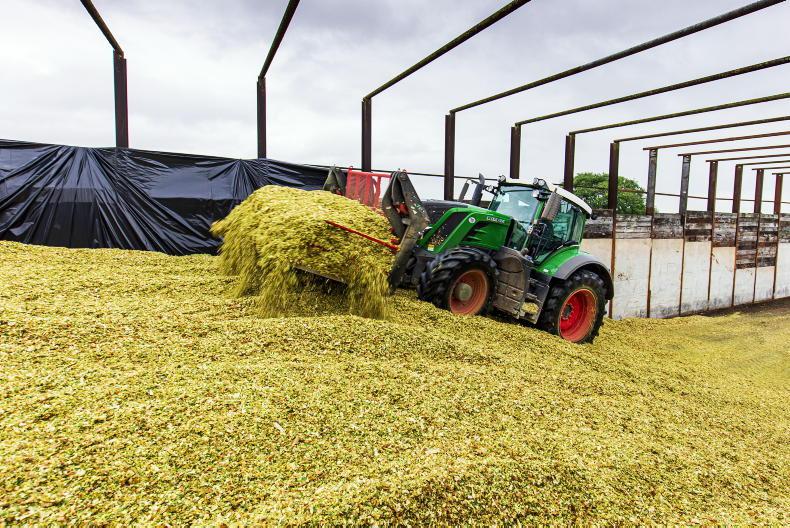
The 2019 model 824 was bought for some heavy pushing power, it also handles a compactor when needed / Ken Topham MWR Media
Forage harvesting with Jaguar 870
We started by asking Andrew about his forage harvester and how he approaches the costs involved in running a high-capital machine. The Jaguar chops 3,000ac of grass, 600ac of maize and 200ac wholecrop, all for dairy and livestock. Buying a new machine was a big step for Andrew. Dating back to their first trailed machine, they have been Claas users, so it was no surprise a Jaguar was at the top of the list when it came to buying a new machine. “We like the Claas foragers. Our local dealer Morris Corfield is very good, and we used Claas finance to buy our 860, and again when we changed for the 870.”
The Jaguar 870 is set for five years of ownership, with the intention of it being paid off after four years. The benefit of a new machine is reliability, but the back-up is the main factor: “When we ran older foragers, we did quite a lot of the service work ourselves, but getting the dealer involved means there’s a record of the service, and the back-up. Even out-of-warranty is reflected by the fact that they look after the main servicing.” Andrew did explain that he will do wearing part replacement and crop-change specific jobs, like swapping corn cracker rollers from grain to maize.
But taking the machine in for annual services pays dividends, as warranty jobs can be done. Claas, like many manufacturers, will take a better view of machines that are under the dealer’s eye if there is an out-of-warranty issue (where a known problem has occurred). Another benefit is getting it plugged into the technician’s lap top, clearing faults and doing updates; the kind of tasks that were never an issue on a 492 body Claas. The resale value will also see a positive impact from regular dealer inspection.
Prices charged by the hour
When it comes to actually using the Jaguar 870, Andrew takes a pragmatic approach, working with customers on pricing: “There’s a supplement that comes out annually with the Farm Contractor & Large Scale Farmer magazine and they have a price guide that we work to – it’s very useful for pricing most contract work.”
The guide is put together based on new machine prices, depreciation, wages for the operator and fuel cost. Andrew says he charges by the acre for the forage harvester, mowers, rake and buckrake; the haulage team are charged by the hour. When the crops are lighter during second-cut, he will charge by the hour for harvesting too, which benefits the customer.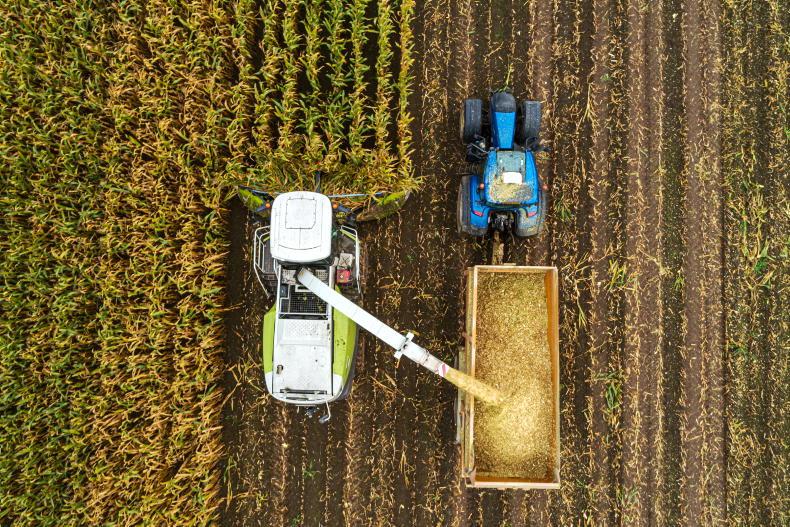
The current set up for maize, Jaguar 870 Orbis 600 and a T4 Valtra on haulage duties. / Ken Topham MWR Media
Fuel-recording
When it comes to fuel, DW & AD Gregory always fill up at base: “We have filters on the fuel tanks here, and we know where the fuel comes from and how it’s stored. We also keep daily records of what each machine has used, and this has been particularly important with recent rises.” A feature Andrew has added to both his new Jaguars was Dynamic Power, which sees the 870 with a very similar fuel consumption to the previous 860 (in grass). With the trend toward multi-cut grass harvesting building, the harvester is returning 5.5 to 6.5 litres/acre in grass and heading toward nine in maize. Recording the fuel use makes passing the cost onto the customer easier and better for cost management.
“We have found fuel-recording a valuable exercise. You can see increases in consumption for job-to-job, even when we have a silage job that involves more roadwork, you can see the tractors using more, which helps to keep a realistic view of what’s going out.”
Richard Western trailers
With mostly short draws, Andrew has enough tractors and trailers without having to pull other contractors in for silaging. He also has a good pool of self-employed operators to call on, as some customers like to put a tractor on where possible to mitigate their costs. He has been running Richard Western, a leading trailer manufacturer, since the business switched to a self-propelled forage harvester. He runs six trailers – three 12 tonne and three 14 tonne. “We like the Richard Western trailers, they aren’t too heavy and feel well-made. They all have the same BKT tyres, which means spares are available and they all handle the same. We don’t have steering axles, so when we have different drivers they know what to expect from them.”
Extended warranty use
The tractor fleet is like many contractors, with some slightly older tractors running second-line to the current machines: “We still have a 2016 Puma 165 and a New Holland T7530, which my dad uses. These are good tractors to have around – they do light work and some haulage, they’re paid for and we don’t mind them standing. You just have to accept they’re going to need some attention and will, at some point, need a repair.”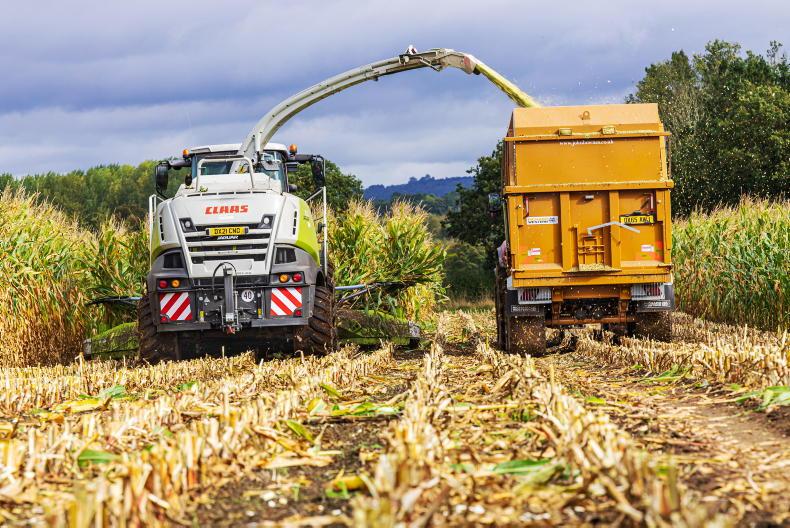
Richard Western trailers are standard equipment, running identical trailers keeps things simple / Ken Topham MWR Media
Andrew has gone down the extended warranty route with his new tractors. He finances the tractors and takes extended warranty over five years, at which time the tractors have done between 4,500 and 5,000 hours. Servicing is done by the dealer and this isn’t a fixed price package, so there are fluctuations in costs depending on the service type and oil-and-parts cost increases. But with an extended warranty there aren’t any big surprises, and everything is kept up to date on the software side of the services.
“The extended warranty is just insurance against big repair bills. Modern tractors are sophisticated and they all go wrong; thankfully, we haven’t had any catastrophic breakdowns, but you could easily be looking at a £20,000 bill from a major engine or transmission failure.”
Dealer servicing also has a positive impact on the resale value of tractors at the hours they are traded at. Tractors are often ex-demo, which usually means they are well-spec’d and have had a reduction in price. The most recent to be added is the Valtra T235, which was Valtra’s own UK demo tractor from 2022 – again, a high-spec’d model.
Loading, drilling and reseeding
The Fendt was added two seasons ago with an 824 Power Plus. After dabbling with the reverse drive of a Valtra for buckraking, the regular clampman wasn’t happy with this and wanted to look forward over a bonnet. The Fendt’s front linkage and tractor weight seem a good match for the job and it can handle a compactor on the back while pushing up silage.
As there isn’t a shovel loader in the business, Andrew sees the tractor as the most cost-effective option on the clamp for his business.
“We run two Bunning muck spreaders, but usually the farmers want to load with their own machines. This works for us as we mostly spread farmyard manure, so we don’t require a loader at the moment, and it would mean bringing a tractor in to use the silage compactor if we clamped with a shovel.”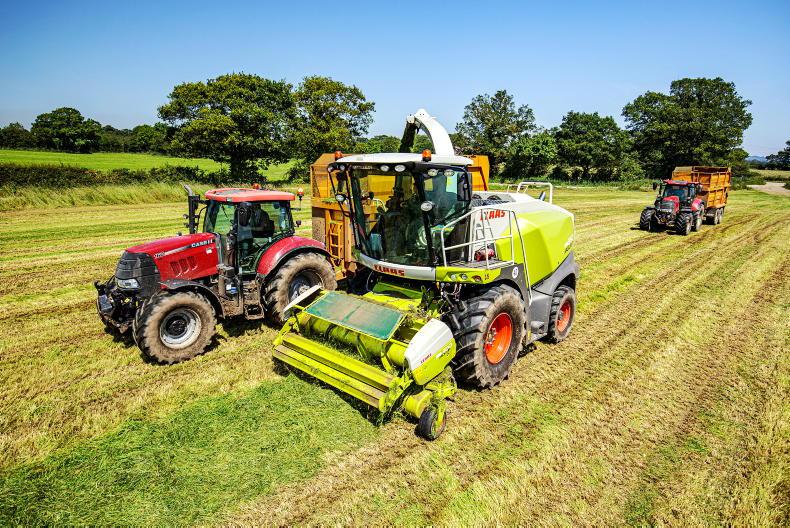
Andrew finances the tractors and takes extended warranty over five years, at which the tractors have done between
4500-5000 hours / Ken Topham MWR Media
Drilling and reseeding
DW & AD Gregory also carry out drilling and reseeding work, running Kuhn ploughs, Amazone power harrows and a three-metre one pass, also from Amazone. Taking a pragmatic approach to wearing parts, using genuine plough parts has been the most cost-effective path recently, with Kuhn points being slightly more expensive but lasting longer. The power harrows on the other hand are fitted with third party blades, usually from Pan Anglia.
This has been an interesting insight into how a contractor runs a modern fleet of equipment, and also how he manages costs. The business operates within a few miles of their base, as they try to avoid too much roadwork. The old adage of “there’s no profit in farming tarmac” does still hold true for much of agricultural contracting, with a few jobs being the exception.
DW & AD Gregory, location Chester, Cheshire.
Services offered:
Silage, grass, whole crop and maize.Muck spreading.Ploughing.Reseeding.Cereals drilling.Mowing.Fertiliser spreading.Hedge-cutting.Claas Jaguar 870 year 2021.Fendt 824 Year 2019.Valtra T234 20.Valtra T194 2019.Valtra T235 2022.Case Puma 165.New Holland T7530.New Holland TX 32.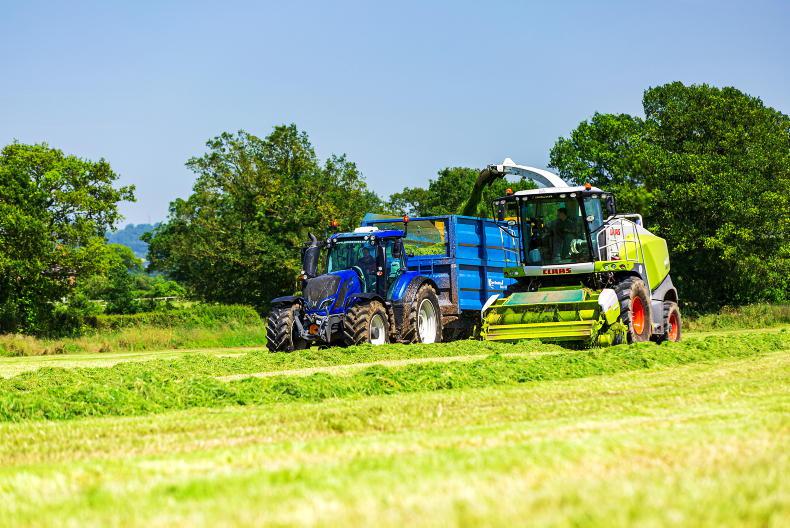
The Jaguar 860 was D.W & A.D Gregory’s first new forage harvester back in 2017. / Ken Topham MWR Media
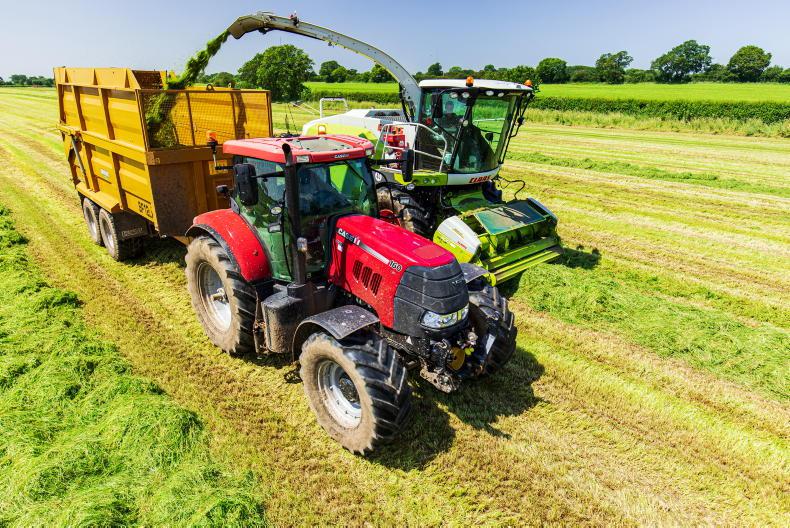
The Puma 160 is no longer in the fleet, D.W & A.D Gregory once exclusively ran exclusively Case tractors / Ken Topham MWR Media
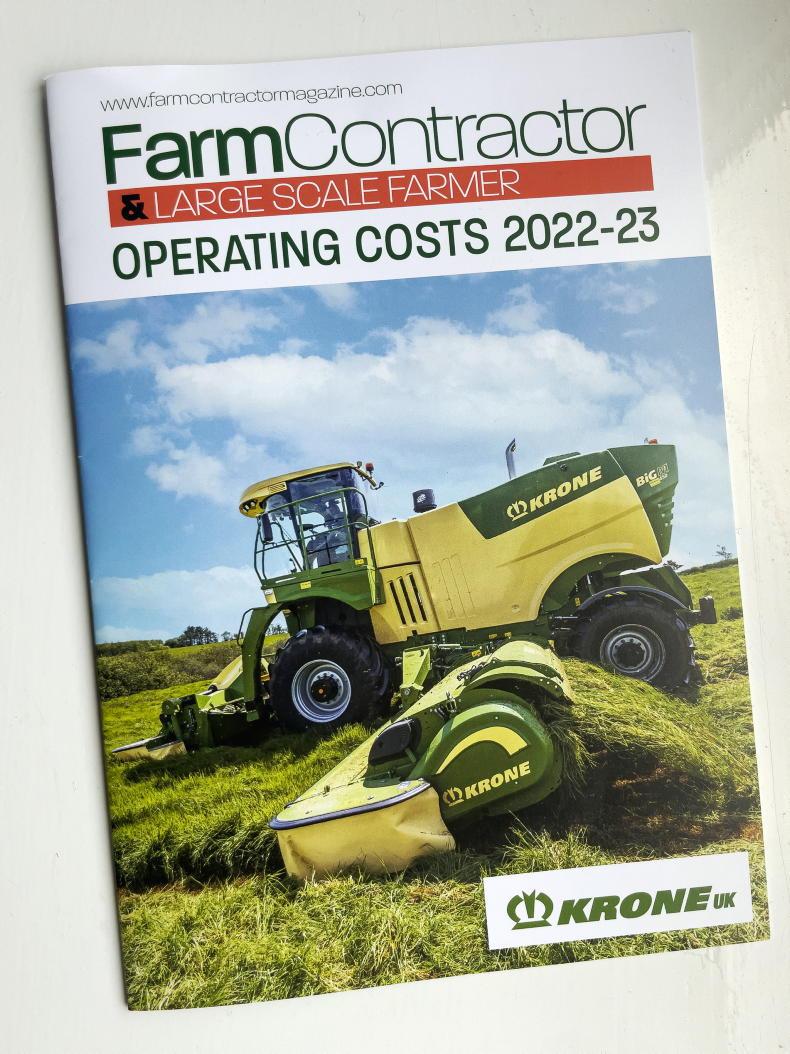
Where Andrew starts with his pricing, with adjustments for fuel and wages / Ken Topham MWR Media
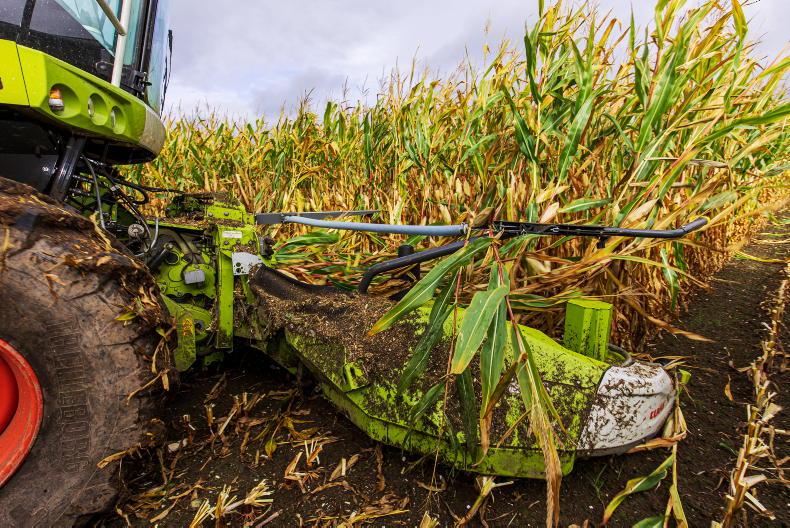
The main reason for upgrading the forage harvester was to get better output in maize, and pairing the Orbis 600 with the Jaguar 870 / Ken Topham MWR Media
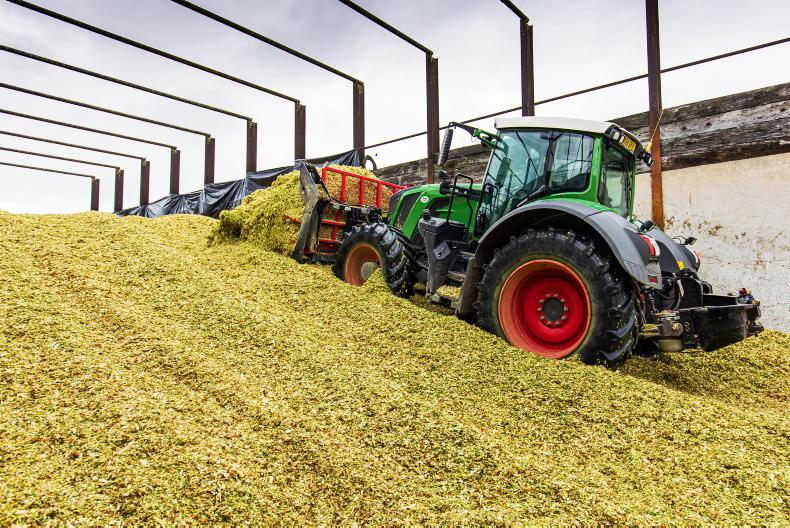
The 2019 model 824 was bought for some heavy pushing power, it also handles a compactor when needed. / Ken Topham MWR Media
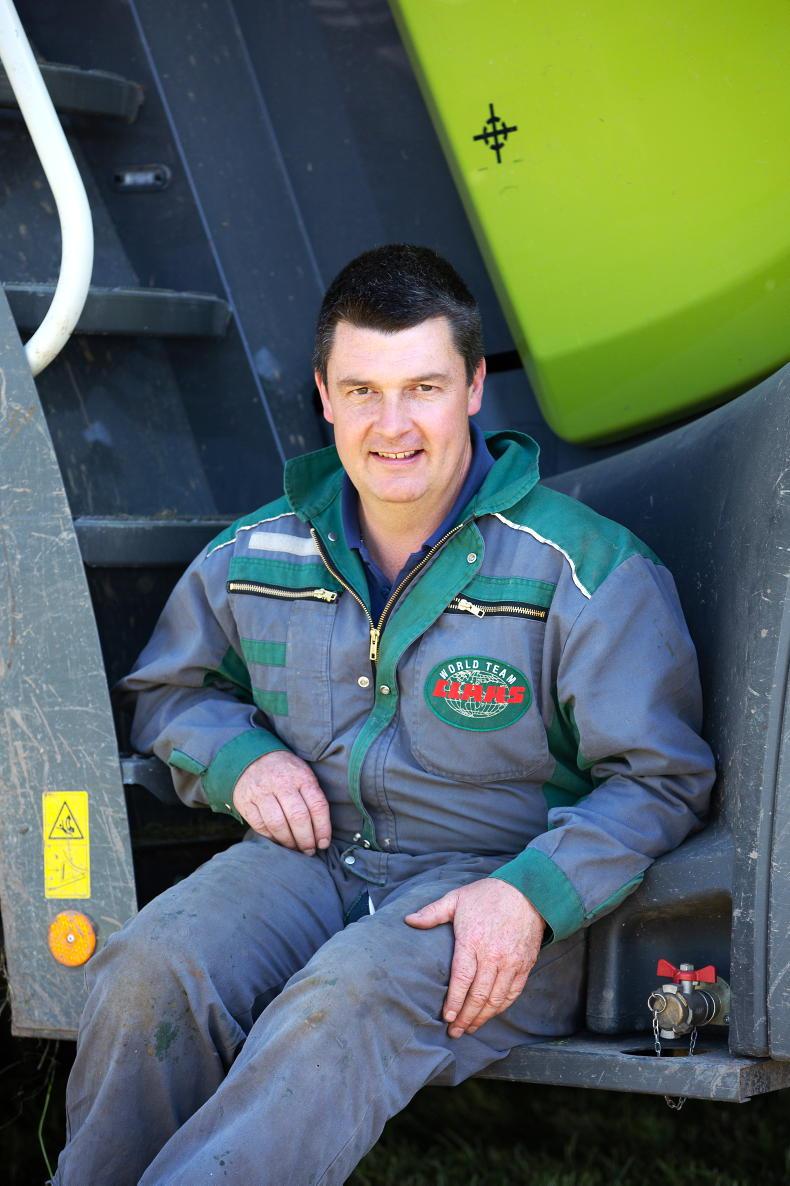
Andrew Gregory of D.W & A.D Gregory. / Ken Topham MWR Media
Originally the Gregory business was built around lime spreading, which was carried out by David Gregory, before it evolved into silage harvesting with trailed machines. When son Andrew joined the business full-time in the early 2000s, the next step was made by purchasing a used Claas Jaguar 840, which replaced a Jaguar 75. Since then, Andrew has been carefully building the business with good used machines when he can find the right item, to the point where he now runs some new tractors and a fresh forage harvester.
Andrew leads the business and is now on his second new forage harvester. After years of running good used machines, he first made the step to a brand new Jaguar 860 in 2017, which has since been updated to an 870 in 2021 to match up to an eight row Orbis Andrew bought (pre-owned) the season before. The business has run on Case tractors, and still owns one; the T4 and T5 Valtras have become common on the fleet since their launch, proving to be a versatile balance of power and chassis size.
The 2019 model 824 was bought for some heavy pushing power, it also handles a compactor when needed / Ken Topham MWR Media
Forage harvesting with Jaguar 870
We started by asking Andrew about his forage harvester and how he approaches the costs involved in running a high-capital machine. The Jaguar chops 3,000ac of grass, 600ac of maize and 200ac wholecrop, all for dairy and livestock. Buying a new machine was a big step for Andrew. Dating back to their first trailed machine, they have been Claas users, so it was no surprise a Jaguar was at the top of the list when it came to buying a new machine. “We like the Claas foragers. Our local dealer Morris Corfield is very good, and we used Claas finance to buy our 860, and again when we changed for the 870.”
The Jaguar 870 is set for five years of ownership, with the intention of it being paid off after four years. The benefit of a new machine is reliability, but the back-up is the main factor: “When we ran older foragers, we did quite a lot of the service work ourselves, but getting the dealer involved means there’s a record of the service, and the back-up. Even out-of-warranty is reflected by the fact that they look after the main servicing.” Andrew did explain that he will do wearing part replacement and crop-change specific jobs, like swapping corn cracker rollers from grain to maize.
But taking the machine in for annual services pays dividends, as warranty jobs can be done. Claas, like many manufacturers, will take a better view of machines that are under the dealer’s eye if there is an out-of-warranty issue (where a known problem has occurred). Another benefit is getting it plugged into the technician’s lap top, clearing faults and doing updates; the kind of tasks that were never an issue on a 492 body Claas. The resale value will also see a positive impact from regular dealer inspection.
Prices charged by the hour
When it comes to actually using the Jaguar 870, Andrew takes a pragmatic approach, working with customers on pricing: “There’s a supplement that comes out annually with the Farm Contractor & Large Scale Farmer magazine and they have a price guide that we work to – it’s very useful for pricing most contract work.”
The guide is put together based on new machine prices, depreciation, wages for the operator and fuel cost. Andrew says he charges by the acre for the forage harvester, mowers, rake and buckrake; the haulage team are charged by the hour. When the crops are lighter during second-cut, he will charge by the hour for harvesting too, which benefits the customer.
The current set up for maize, Jaguar 870 Orbis 600 and a T4 Valtra on haulage duties. / Ken Topham MWR Media
Fuel-recording
When it comes to fuel, DW & AD Gregory always fill up at base: “We have filters on the fuel tanks here, and we know where the fuel comes from and how it’s stored. We also keep daily records of what each machine has used, and this has been particularly important with recent rises.” A feature Andrew has added to both his new Jaguars was Dynamic Power, which sees the 870 with a very similar fuel consumption to the previous 860 (in grass). With the trend toward multi-cut grass harvesting building, the harvester is returning 5.5 to 6.5 litres/acre in grass and heading toward nine in maize. Recording the fuel use makes passing the cost onto the customer easier and better for cost management.
“We have found fuel-recording a valuable exercise. You can see increases in consumption for job-to-job, even when we have a silage job that involves more roadwork, you can see the tractors using more, which helps to keep a realistic view of what’s going out.”
Richard Western trailers
With mostly short draws, Andrew has enough tractors and trailers without having to pull other contractors in for silaging. He also has a good pool of self-employed operators to call on, as some customers like to put a tractor on where possible to mitigate their costs. He has been running Richard Western, a leading trailer manufacturer, since the business switched to a self-propelled forage harvester. He runs six trailers – three 12 tonne and three 14 tonne. “We like the Richard Western trailers, they aren’t too heavy and feel well-made. They all have the same BKT tyres, which means spares are available and they all handle the same. We don’t have steering axles, so when we have different drivers they know what to expect from them.”
Extended warranty use
The tractor fleet is like many contractors, with some slightly older tractors running second-line to the current machines: “We still have a 2016 Puma 165 and a New Holland T7530, which my dad uses. These are good tractors to have around – they do light work and some haulage, they’re paid for and we don’t mind them standing. You just have to accept they’re going to need some attention and will, at some point, need a repair.”
Richard Western trailers are standard equipment, running identical trailers keeps things simple / Ken Topham MWR Media
Andrew has gone down the extended warranty route with his new tractors. He finances the tractors and takes extended warranty over five years, at which time the tractors have done between 4,500 and 5,000 hours. Servicing is done by the dealer and this isn’t a fixed price package, so there are fluctuations in costs depending on the service type and oil-and-parts cost increases. But with an extended warranty there aren’t any big surprises, and everything is kept up to date on the software side of the services.
“The extended warranty is just insurance against big repair bills. Modern tractors are sophisticated and they all go wrong; thankfully, we haven’t had any catastrophic breakdowns, but you could easily be looking at a £20,000 bill from a major engine or transmission failure.”
Dealer servicing also has a positive impact on the resale value of tractors at the hours they are traded at. Tractors are often ex-demo, which usually means they are well-spec’d and have had a reduction in price. The most recent to be added is the Valtra T235, which was Valtra’s own UK demo tractor from 2022 – again, a high-spec’d model.
Loading, drilling and reseeding
The Fendt was added two seasons ago with an 824 Power Plus. After dabbling with the reverse drive of a Valtra for buckraking, the regular clampman wasn’t happy with this and wanted to look forward over a bonnet. The Fendt’s front linkage and tractor weight seem a good match for the job and it can handle a compactor on the back while pushing up silage.
As there isn’t a shovel loader in the business, Andrew sees the tractor as the most cost-effective option on the clamp for his business.
“We run two Bunning muck spreaders, but usually the farmers want to load with their own machines. This works for us as we mostly spread farmyard manure, so we don’t require a loader at the moment, and it would mean bringing a tractor in to use the silage compactor if we clamped with a shovel.”
Andrew finances the tractors and takes extended warranty over five years, at which the tractors have done between
4500-5000 hours / Ken Topham MWR Media
Drilling and reseeding
DW & AD Gregory also carry out drilling and reseeding work, running Kuhn ploughs, Amazone power harrows and a three-metre one pass, also from Amazone. Taking a pragmatic approach to wearing parts, using genuine plough parts has been the most cost-effective path recently, with Kuhn points being slightly more expensive but lasting longer. The power harrows on the other hand are fitted with third party blades, usually from Pan Anglia.
This has been an interesting insight into how a contractor runs a modern fleet of equipment, and also how he manages costs. The business operates within a few miles of their base, as they try to avoid too much roadwork. The old adage of “there’s no profit in farming tarmac” does still hold true for much of agricultural contracting, with a few jobs being the exception.
DW & AD Gregory, location Chester, Cheshire.
Services offered:
Silage, grass, whole crop and maize.Muck spreading.Ploughing.Reseeding.Cereals drilling.Mowing.Fertiliser spreading.Hedge-cutting.Claas Jaguar 870 year 2021.Fendt 824 Year 2019.Valtra T234 20.Valtra T194 2019.Valtra T235 2022.Case Puma 165.New Holland T7530.New Holland TX 32.
The Jaguar 860 was D.W & A.D Gregory’s first new forage harvester back in 2017. / Ken Topham MWR Media

The Puma 160 is no longer in the fleet, D.W & A.D Gregory once exclusively ran exclusively Case tractors / Ken Topham MWR Media

Where Andrew starts with his pricing, with adjustments for fuel and wages / Ken Topham MWR Media

The main reason for upgrading the forage harvester was to get better output in maize, and pairing the Orbis 600 with the Jaguar 870 / Ken Topham MWR Media

The 2019 model 824 was bought for some heavy pushing power, it also handles a compactor when needed. / Ken Topham MWR Media

Andrew Gregory of D.W & A.D Gregory. / Ken Topham MWR Media
















 This is a subscriber-only article
This is a subscriber-only article






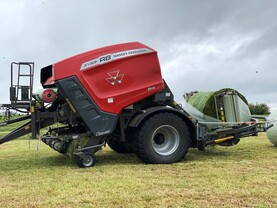


SHARING OPTIONS: